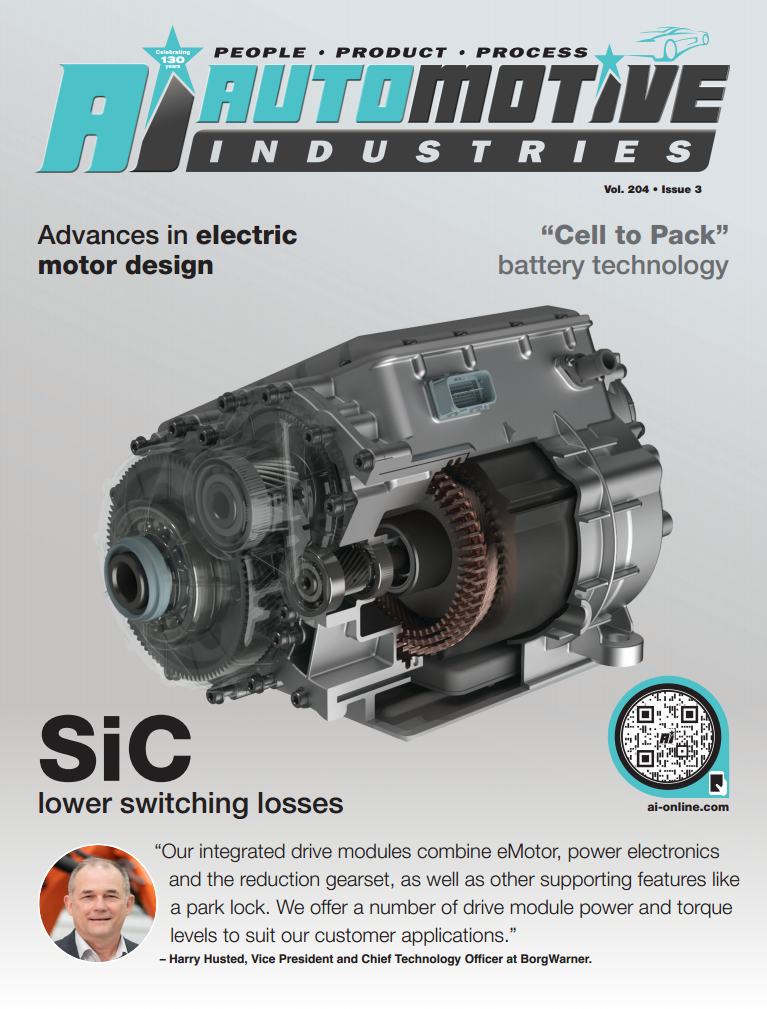
To download the BorgWarner brochure, click here.
High-voltage electric propulsion technology is being showcased globally by BorgWarner.
The systems include an 800V inverter, an eMotor, an integrated drive module and a range of coolers and fans. Viper silicon carbide power modules in the 800V inverter optimize conduction and reduce switching losses by up to 70% compared to silicon-based technology, according to BorgWarner.
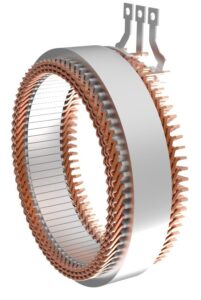
World-class power density with peak efficiency greater than 97% has been achieved in the high- voltage hairpin eMotor HVH320, which the company describes as a powerful and durable electric motor/generator designed for use in on- or off-highway commercial vehicles and other special high-power applications.
Another system being showcased is BorgWarner’s iDM220 module, a customizable and integrated drive module (iDM) which combines power electronics, electric motor and mechanical components within one single eAxle unit.
The company is also showcasing advances in thermal management solutions, including a high-voltage coolant heater, and high-voltage air heater. There is also a new range of eFans which provide cost-effective cooling for electric commercial vehicles.
In addition, a series of eCoolers has been developed for power electronics and intercell battery thermal management.
Automotive Industries (AI) asked Harry Husted, Vice President, and Chief Technology Officer at BorgWarner, what he believes are the major advances in electrification technologies for electric and hybrid vehicles.
Husted: Looking at the sector as a whole, there are breakthrough advances in battery technology, power electronics and motor design, which contribute to seamless integration of the vehicle systems. The three technologies are interconnected and reliant on each other to improve the efficiency of battery powered vehicles.
Battery costs are coming down, together with advances in energy density, charging speed, safety, and longevity. Coupled to this, the efficiency and power density of inverters and converters is increasing significantly through the adoption of silicon carbide (SiC) semiconductors. This has enabled engineers and designers to increase system voltage to 800 Volts and more.
This leads us to the advances made in electric motor design. We are improving the way we get power to a wound rotor with a contactless transformer, for example. Continued optimization is increasing the power-to-weight ratios, with motors running at higher speeds.
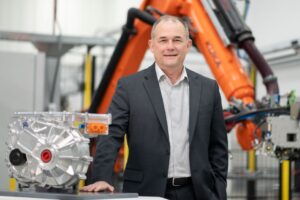
Operating temperatures are controlled through thermal optimization, and the operating life is being increased through improved assembly processes that also lead to greater reliability. Electric motors are also becoming more sustainable through innovation in rare-earth-free, wound-rotor machines.
AI: What will speed up the demand for electric vehicles?
Husted: Faster rollout of DC fast chargers is critical to the overall EV adoption rate in some regions.
DC fast chargers utilize silicon carbide for higher efficiency and improved overall charging reliability.
The next wave for fleets will be the addition of bi-directional capability in the chargers and a deeper linkage to – and coordination with – the grid.
AI: What are the advantages of the BorgWarner silicon carbide (SiC) inverter platforms for electric vehicles?
Husted: We use a proprietary power switch package for the silicon carbide die that allows for cooling on both sides and a choice of the number of die without affecting the outer package dimensions or connection points.
This allows us to choose the right amount of SiC for the customer application while retaining excellent design reuse across products.
SiC offers significantly lower switching losses and faster switching speeds compared to traditional silicon-based inverters, leading to higher efficiency.
Faster switching enables higher frequency operation for better control of electric motors.
AI: What about power density?
Husted: SiC enables higher power density due to its lower losses and higher operating temperatures. If the customer chooses to go up in system voltage, for example from 400V to 800V, SiC is well-suited and we are able to boost the power density of the inverter yet again.
Our proprietary switch package is very small, as is our dual heat exchanger for the power switches, so we achieve excellent compactness in our power module.
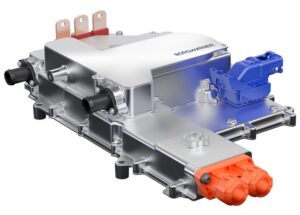
AI: Electric motors and generators can run at very high speeds. How do you control them?
Husted: Traction motors and generators typically run at maximum speeds in the 15,000 to 20,000 rpm range. For these speeds, we use a two-level inverter with control algorithms optimized for efficiency and a broad range of operation, including execution at high speed.
AI: Please tell us about your Integrated Drive Module.
Husted: Our integrated drive modules combine eMotor, power electronics and the reduction gearset, as well as other supporting features like a park lock. We offer a number of drive module power and torque levels to suit our customer applications. Our latest development is the high efficiency iDM 180 with a 180mm stator outside diameter of the electric machine.
The iDM’s eMotor rotor design is optimized for system performance, cost, and efficiency.
The stator is designed for optimized system packaging, performance, and cost. The combination provides market leading torque density and cost. Power is transferred to the wheels through a gearbox featuring a compact dual-layshaft with integrated differential.
The input shaft bearing pitch diameter has been reduced by 47%. Lubrication is provided through a failsafe air barrier effect.
Connecting the battery to the working components is a compact inverter assembly with fewer parts due to single board architecture and a streamlined power flow design which reduces parasitic losses in the power module.
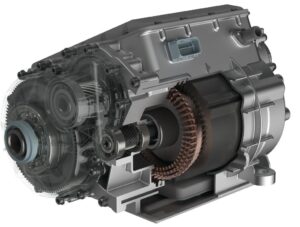
AI: Are there any other technological advances you want to highlight?
Husted: We recently signed a strategic relationship agreement with FinDreams Battery to use their LFP blade cells in BorgWarner commercial vehicle battery packs to be supplied to Europe, the Americas, and select regions of Asia Pacific. The FinDreams blade cell works with a “cell-to-pack” architecture to give very good energy density at the battery pack level.
AI: What technology will you be showcasing between September 17 and 22 at IAA Transportation 2024?
Husted: Visitors can expect to discover more about our:
- New battery packs with LFP technology
- High-power charging stations
- Thermal management technologies at the vehicle level, eFan and eHeater, and at the battery pack level, eCooler.
- Power electronics: Inverter, high voltage box with onboard charger and DC/DC converter
- Propulsion technologies: eMotor
- Foundational technologies such as turbochargers, EGR and VCT
AI: What technological advances will we see over the next two to three years?
Husted: There will be breakthroughs in battery technology and power electronics. For commercial vehicles, there will be continued improvements in energy density and charging rates, with a focus on LFP batteries.
Chemistry improvements and new chemistries are being developed, so there will be progress in the range and longevity of batteries. At the same time software algorithms for battery management help improve battery cycle life, reduce charging time, and monitor battery health.
In the power electronics segment, widespread adoption of SiC semiconductors for inverters and converters will provide higher efficiency and power density and support the move toward higher system voltages.

More Stories
Venti Technologies Wins Multiple Pinnacle Awards for Innovation and Achievement in Technology
Launch of AltaScient.ai: New horizons for Risk and Sustainability Analytics
Expert Tips on Detailing a Car